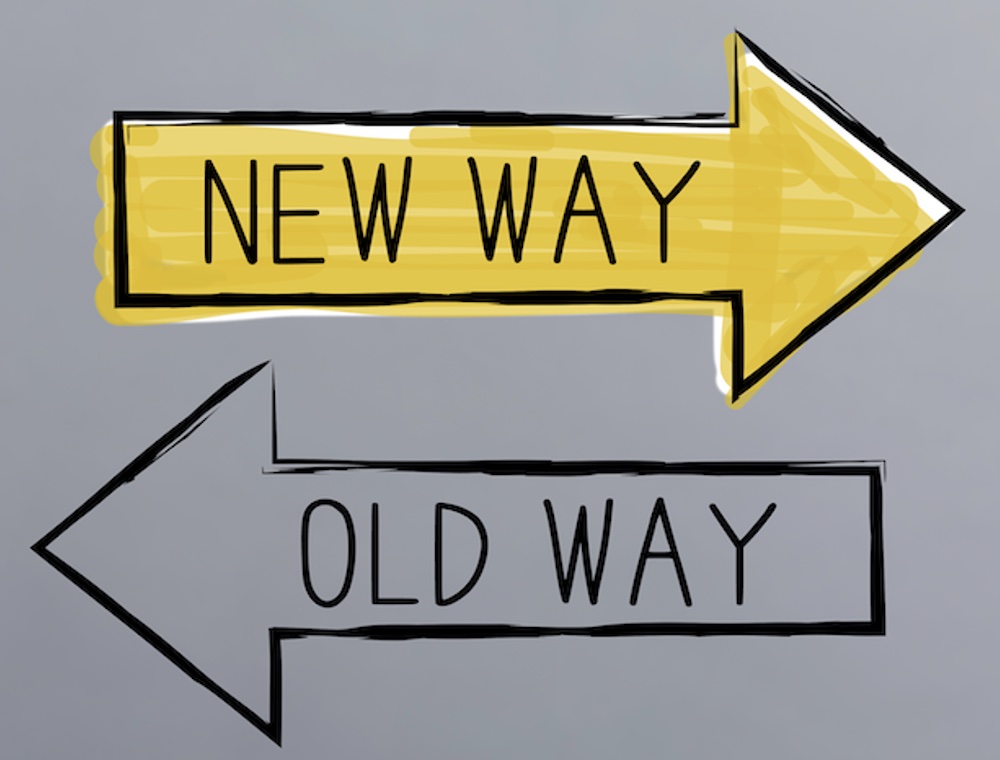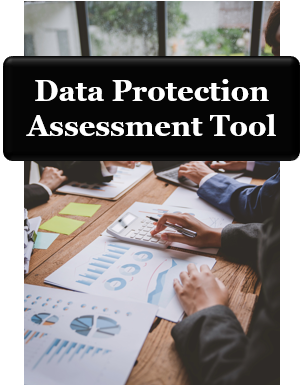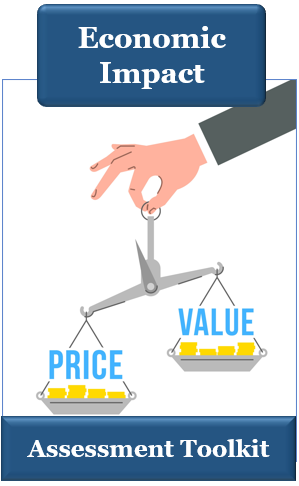Ultimate Guide on Project Management Change Control
Summary – Change Control Process
Imagine embarking on a perilous sea voyage, where unpredictable waves and tumultuous storms threaten to capsize your ship at any moment. The Change Control Process is your expert crew and state-of-the-art navigation system, meticulously plotting the course, ensuring safe passage through the volatile seas of organizational modifications.
But no voyage is complete without a council of seasoned captains—the Change Control Board (CCB). This assembly of wise minds scrutinizes every proposed alteration, making certain that it aligns with the voyage’s goals and won’t steer the ship into treacherous waters.
“Let us dive into the world of Change Control Process & Board Management, where strategic navigation meets collective wisdom, ensuring not just survival, but triumph in the face of change.”
Change control is a systematic process used to manage and regulate alterations or modifications within various domains of an organization, such as systems, processes, or projects. It involves the careful planning, approval, documentation, and implementation of changes to maintain stability and minimize associated
Various factors and events can trigger the need for change control in project management. These catalysts could range from stakeholder requests and new requirements to adjustments in scope. Other factors such as risks and issues, market or environmental changes, advancements in technology, resource constraints, and improvements in quality can also necessitate change control.
There are several types of change control in project management, each designed to cater to the nature and complexity of the particular change being managed. These include standard change, normal change, emergency change, major and minor changes, and adaptive change. There are also corrective, preventive, strategic, and tactical changes. Each type serves a different purpose and applies to various contexts and change requirements.
The change control process itself is divided into several critical steps. It starts with change identification and a request for change control. Next, the proposed change undergoes evaluation and, if deemed beneficial, approval. This is followed by the development of a change control plan. The subsequent steps include change review, testing, and validation. Communication about the change is vital, followed by its implementation. Afterward, a post-implementation review is conducted to assess the efficacy of the change. The final step is documentation and closure, encapsulating the entire process to create a formal record of the change and its effects.
Software engineering also utilizes change control as a crucial part of the software development process. Here, changes to software projects and related artifacts are systematically managed. This involves evaluating, approving, and implementing changes while maintaining the quality, stability, and integrity of software products.
In order to effectively oversee change control activities, organizations can utilize a variety of change control tools and change control document template resources. Notably, comprehensive software solutions can be particularly valuable – enhancing the management of change control, thus becoming an indispensable tool in today’s dynamic business landscape.
If you’re looking to learn more about each step of change control process and get free change control document template resources you can utilize in your change control process, head down to our Table of Contents.

2024 Guide on Project Management Change Control
See Also: Best Guide on ITIL Change Management with Free Templates, Samples & Checklist
|
DETAILED SECTION |
|
If you’re eager to delve deeper into the change control process, proceed to our detailed sections below that provide a detailed overview. |
Table of Contents: 2024 Change Control Management Guide
Keep on scrolling down this page to read each section or click any link below to go directly to that section.
- What is Change Control?
- What Could Change Control in Project Management Be Triggered By?
- Types of Change Control in Project Management
- Project Change Control Process
- Change Control in Software Engineering
- Benefits of a Change Control System in Project Management
- FREE Change Control Templates
- Change Control Tools & IT Change Management Software
- Conclusion | Project Management Change Control
- FAQ | Integrated Change Control In Project Management
If you’re ready to tackle everything you should know about the change control process, first we need to get to the bottom of change control definition.
What is Change Control? | Change Control Definition
Change control definition refers to the systematic process of managing and regulating alterations or modifications to a system, process, or project within an organization.
It ensures that any changes made are well-planned, approved, documented in a change control document, and implemented in a controlled manner, aiming to minimize risks and maintain stability while maximizing the benefits of the change.
What is Integrated Change Control (ICC)?
Integrated Change Control (ICC) in project management refers to the process of systematically reviewing, evaluating, and managing all proposed changes to a project in a coordinated and structured manner.
Integrated change control is an essential part of the project management process that ensures changes are properly assessed before they are implemented.
Integrated change control process helps maintain project objectives, control potential risks, and avoid scope creep.

Change Control in Project Management
What is the IT Change Control Definition?
IT change control definition refers to a structured approach employed by businesses or IT departments to govern changes made to their systems, software, hardware, or procedures.
It involves a set of procedures, policies, and change control tools that oversee the entire lifecycle of a change, from the initial change control request or idea to its evaluation, approval, implementation, and post-implementation review.
IT change control deals with managing modifications in an organization’s IT infrastructure, software applications, and digital processes.
IT systems often interconnect and depend on each other, making change control crucial to prevent disruptions, security breaches, or unintended consequences when changes are introduced.
What is Change Control GMP?
Change control GMP in the context of Good Manufacturing Practice (GMP) refers to the systematic process of managing and documenting changes made to a pharmaceutical or biopharmaceutical manufacturing process, facility, equipment, or systems.
Change control GMP is a set of guidelines and regulations issued by health authorities to ensure that pharmaceutical products are consistently produced and controlled according to quality standards.
With change control GMP, ICC, and IT covered, let’s get into what could change control in project management be triggered by.
Do you need more information on IT change control or change control flowchart in general? Please reach out and let us know.
What Could Change Control in Project Management Be Triggered By?
Project management change control could be triggered by various factors and events that arise during the project lifecycle.
Some common factors change control could be triggered by include:
- Stakeholder Requests
- New Requirements
- Scope Creep/Scope Change Control
- Risks and Issues
- Market or Environmental Changes
- Technology Advancements
- Resource Constraints
- Quality Improvements
- Legal or Compliance Requirements
- Lessons Learned
It’s essential for project managers to be proactive in identifying what change control could be triggered by and to establish a systematic process to assess and manage change requests.
Proper change control ensures that changes are thoroughly evaluated, approved, and implemented while minimizing potential negative impacts on the project.
Next, we’ll take a look at types of change control.
Related: The Ultimate Guide to Business Impact Assessment (Step-by-Step)
Types of Change Control | Project Change Control
Change control in project management can be categorized into several types based on the nature, impact, and urgency of the changes being managed.
The main types of change control include:
⋅ Standard Change
Also known as routine or pre-authorized change, this type refers to changes that are well-defined, low-risk, and frequently occurring.
Standard changes follow a predefined and pre-approved process, often without the need for a full formal change evaluation or approval from the change control board.
Standard change control example scenarios:
- Software Updates
- Patch Management
- Hardware Replacements
- Password Resets
- Routine Maintenance Tasks
- Network Device Configurations
- Documentation Updates
⋅ Normal Change
Normal changes are more significant than standard changes but are not considered emergency or urgent.
These changes go through a formal change control process, including evaluation, approval, change control plan, testing, and implementation, following the organization’s established procedures.
Normal change control example scenarios:
- Hardware Upgrades
- Network Infrastructure Changes
- Database Migrations
- Server Migrations
- Virtualization or Cloud Adoption
- Introduction of New Software or Tools
- Data Security Enhancements
- Server Load Balancing
⋅ Emergency Change
Emergency changes are critical and require immediate attention due to unforeseen circumstances, such as system outages, security breaches, or severe disruptions.
The change control process for emergency changes is expedited to address the urgent situation quickly, but it still involves proper evaluation, change control plan, and testing to minimize risks.
Emergency change control example scenarios:
- Malware or Virus Remediation
- Server or Network Outages
- Data Corruption Recovery
- Application or Service Crashes
- Firewall Rule Change
- Database Recovery:
- Denial of Service (DoS) Attack Mitigation
- Critical Configuration Changes
⋅ Major Change
Major changes have a significant impact on the organization, such as major software upgrades, infrastructure overhauls, or process reengineering.
⋅ Minor Change
Minor changes are relatively small-scale modifications that have minimal impact on the organization and its operations.

Change Control Management
⋅ Adaptive Change
Adaptive change focuses on adapting the organization to external changes and improving its ability to respond to evolving conditions.
⋅ Corrective Change
Corrective changes are implemented to fix identified issues, errors, or defects in systems, processes, or projects.
⋅ Preventive Change
Preventive changes are proactively made to prevent potential issues, risks, or inefficiencies from occurring in the future.
⋅ Strategic Change
Strategic changes are transformative and align with the long-term goals and vision of the organization.
⋅ Tactical Change
Tactical changes are more operational and focus on implementing specific actions or improvements to support strategic objectives.
The classification of types of change control helps organizations tailor their change control process to suit the nature and complexity of each change, ensuring that appropriate levels of evaluation, approval, and change control management are applied.
We the types covered; we’ll get into change control process steps.
Popular Article: Go-Live Plan Guide with Templates and Checklists – Getting Users Ready for a Change
Do you want to know more about the responsibilities of change control board or have a change control procedure example you’d like to share? Get in touch and let us know.
Change Control Procedure | Change Control Process in Project Management
The change control process is a systematic approach to managing changes to systems, processes, projects, or any other aspect within an organization.
Change control procedure ensures that changes are carefully evaluated, approved, planned, implemented, and monitored to minimize risks and maintain stability while maximizing the benefits of the changes.
The change control process in project management involves a series of well-defined steps that guide the handling of change control request from initiation to closure.
Today, we’ll be looking into integrated change control in project management specifically.
Integrated change control process steps include:
- Change Identification and Change Control Request
- Change Evaluation
- Change Approval
- Change Control Plan
- Change Review
- Change Testing and Validation
- Change Communication
- Change Implementation
- Post-Implementation Review
- Documentation and Closure
In the sections below we’ll take a look at each of the steps involved in change control process.
1. Change Identification and Change Control Request – Integrated Change Control Process Flow
The change control procedure begins when an individual or team identifies a need for a change.
A good change control process example could be a suggestion for improvement, a bug report, a request for a new feature, or any modification to the existing setup.
Once a change is identified, a formal change control request is initiated to propose the alteration.
This change request control is a structured document that provides essential information about the proposed change.
Key components of a change request control/change control form include:
- Description of the Change
- Objectives
- Expected Benefits
- Rationale
- Impact Analysis
- Resource Requirements
- Change Control Risk Assessment
- Timeline
- Supporting Evidence
By formalizing the change through a well-documented change request control, organizations ensure that changes are not made hastily or without due consideration.
Instead, each change undergoes a systematic evaluation, setting the foundation for subsequent change control process steps, such as change evaluation, approval, planning, and implementation.
If you’re looking to find a downloadable change control form template/change control format, OCM Solution has got you covered.
Keep on reading and find your change control format further down in this article.
What is the difference between change order vs change request?
If you’re confused about the difference between change order vs change request, we’re here to clarify.
Change request is a proposal to change a specific aspect of the project, while a change order is a formal document that authorizes the implementation of the approved change.
The change request is the initial step, while the change order represents the final approval and serves as a contractual agreement for executing the change.
What is a change control log?
A change control log, also known as a change register or change request log, is a document used to track and manage all proposed changes throughout a project’s lifecycle.
Change control log serves as a central repository of information related to change requests, providing a record of their status, evaluation, approval, and implementation.
The change control log helps project managers and stakeholders to stay organized and make informed decisions about changes to the project.
A robust change identification, request project change control process, and change control log contribute to an effective software change management process, promoting successful outcomes and minimizing potential disruptions or adverse impacts on the organization.
Do you want to share your experience with Jira change control? Have you used a change control template Excel that provided value to you? Please reach out and let us know. We’ll love to hear from you.
2. Change Evaluation – Integrated Change Control Procedure
Change evaluation is a critical stage in the change control process where the proposed change request control undergoes a thorough analysis to determine its suitability, feasibility, and potential impact on the organization.
The evaluation is often conducted by a designated change control board or committee.
The project management change control is analyzed in terms of its alignment with business objectives, resource requirements, potential impact on existing systems or processes, and any associated risks.
Let’s delve deeper into the process of change evaluation:
⋅ Designated Change Control Board or Committee: In many organizations, a change control board or committee is responsible for evaluating change requests.
The change control board typically comprises representatives from various departments, including IT, operations, finance, and management.
The change control board ensures diverse perspectives and expertise are considered during the evaluation process.
Some common responsibilities of change control board include:
- Change Evaluation and Prioritization
- Impact Analysis
- Decision-Making
- Alignment with Project Objectives
- Communication
- Documentation such as change control document, change control format, etc.)
- Risk Management
- Continuous Monitoring and Control
- Expert Input
- Process Improvement
These are just some of the common responsibilities of change control board. It’s important to note that the specific responsibilities of change control board may vary based on the organization’s structure and the nature of the projects.
If you’re looking for change control board template or change control board process flow, we have great news for you.
Keep on reading and find the downloadable change control board template and change control board process flow further down in this article.
⋅ Alignment with Business Objectives: The first aspect of evaluation is to assess the proposed change’s alignment with the organization’s strategic objectives and business goals.
The change should contribute to the overall mission and vision of the organization, supporting its long-term growth and success.

Evaluation Stage of Project Change Control
⋅ Resource Requirements: The evaluation considers the resources needed to implement the change successfully. This includes financial resources, human resources, technology, and any other necessary assets.
The availability of resources and the potential impact on existing projects are taken into account during this analysis.
⋅ Impact Analysis: The change’s potential impact on existing systems, processes, and stakeholders is thoroughly analyzed.
This analysis helps identify any potential disruptions or conflicts that may arise as a result of implementing the change control system.
⋅ Feasibility Assessment: The evaluation determines whether the proposed change is feasible from a technical, operational, and financial standpoint.
This involves assessing the organization’s capability to implement the change successfully and sustain its effects in the long term.
⋅ Change Control Risk Assessment: Risks associated with the change are identified and analyzed. These risks may include technical challenges, operational disruptions, financial implications, or potential negative effects on customer satisfaction.
Strategies to mitigate these risks are also considered as part of the evaluation process.
⋅ Cost-Benefit Analysis: A cost-benefit analysis is conducted to weigh the potential benefits of the change against the associated costs and risks.
This analysis helps in making informed decisions about the value proposition of the change.
⋅ Stakeholder Consultation: Stakeholders affected by the change, including end-users, customers, and employees, may be consulted to gather their input and feedback.
⋅ Recommendation and Documentation: Based on the evaluation, the committee or change control board in project management makes a recommendation on whether to approve, modify, or reject the change request.
The findings and recommendations are documented, along with supporting evidence and rationale.
The change evaluation process ensures that change control procedure is thoroughly examined, taking into account various factors that could influence their success.
A well-executed evaluation helps organizations make informed decisions and proceed with change control procedure that aligns with their strategic objectives, minimize risks, and maximize the benefits to the organization and its stakeholders.
Related: Guide on How to Handle Change Management in Agile Projects
3. Change Approval – Integrated Change Control Process Flow
After evaluation, the change control board in project management approves or rejects the change request based on predefined criteria.
If change request is approved by change control authority then it may come with specific conditions that need to be met during the implementation of project change control.
The approval decision is critical to ensure that only valuable and necessary changes are implemented while preventing unnecessary alterations.
Let’s explore this stage of the project change control process in more detail:
⋅ Approval Criteria: The change control board uses predefined criteria to assess whether the proposed change control management aligns with the organization’s strategic objectives, meets business needs, and adheres to established standards and policies.
The change control example criteria may include considerations such as cost-effectiveness, resource availability, alignment with regulatory requirements, and potential impact on existing systems or processes.
What is change control policy?
A change control policy is a formal document that outlines the principles, guidelines, and procedures for managing changes within an organization or project.
Change control policy serves as the foundational framework for evaluating, approving, and implementing changes to ensure that they are managed in a controlled, consistent, and systematic manner.
The change control policy establishes a structured approach to handling change requests and helps maintain project integrity, quality, and adherence to organizational goals.
Looking for change control template resources? We’ve got you covered!
Keep on reading to find different change control process template resources.
⋅ Value and Benefit Analysis: One of the responsibilities of change control board in project management is to evaluate the value proposition of the change by weighing its potential benefits against the associated costs and risks.
⋅ Risk Assessment: Change control board then considers the risks identified during the evaluation stage and evaluates whether the proposed mitigation strategies are adequate.
⋅ Resource Allocation: The availability of resources, both in terms of finances and human capital, is assessed to ensure that the organization can support the implementation of the approved change.

Software Change Management Process – Integrated Change Control
⋅ Stakeholder Consideration: The interests and concerns of various stakeholders are taken into account during the approval process.
⋅ Conditions and Requirements: If change request is approved by change control authority then the change control board in project management may attach specific conditions or requirements that need to be met during implementation.
⋅ Rejection or Modification: If the change does not meet the predefined criteria or align with the organization’s objectives, the board may choose to reject the change request.
Alternatively, the board may request modifications to the proposal before reconsidering its approval.
⋅ Documentation: If change request is approved by change control authority then, the approval decision, along with the reasons and justifications, is documented for future reference and to maintain a transparent record of the change control process in project management.
⋅ Communication: The approval decision is communicated to all relevant stakeholders, including those responsible for implementing the change.
Clear communication ensures that all parties are aware of the approval status and any specific requirements associated with the change.
This disciplined approach helps prevent unnecessary alterations, reduces the likelihood of if change request is approved by change control authority then
if change request is approved by change control authority then
scope change control, and promotes effective change control management.
Additionally, clear documentation and communication foster transparency and understanding among stakeholders, contributing to successful change implementation.
Read More: What Does it Really Take to Get an ITIL Certification? Everything You Need to Know
4. Change Control Plan – Change Control Process in Project Management
If change request is approved by change control authority then a detailed change control plan is developed.
Change control plan template outlines the specific steps involved in change control process required to implement the change successfully.
Change control plan template should include:
- timeline,
- resource allocation,
- testing procedures,
- rollback plan (in case of issues), and
- communication strategy to inform all stakeholders about the upcoming change.
By adhering to the plan and monitoring progress, organizations can implement change control management successfully, achieve desired outcomes, and maximize the benefits of the approved change.
If you’re looking for change control plan template, read on.
5. Change Review – Integrated Change Control Process Flow
The change review stage is a crucial and collaborative step in the change control management, aimed at ensuring the proposed change plan is well-informed, feasible, and aligned with the organization’s needs and goals.
This stage of change control in project management involves actively engaging relevant stakeholders, including IT teams, business units, customers, and other affected parties, to gather valuable feedback and suggestions.
By incorporating diverse perspectives and expertise, the project change control process can be refined and optimized for successful implementation.
Let’s look at the overview of change review stage of project change control process:
- Inclusive Stakeholder Involvement
- Open and Transparent Communication
- Gathering Diverse Perspectives
- Feedback Collection and Analysis
- Validation of Feasibility
- Identification of Potential Risks and Mitigation Strategies
- Continuous Improvement and Iterative Process
- Balancing Trade-Offs
- Engaging Change Champions
- Finalizing the Change Plan
Don’t Miss: Complete Guide to Assessing Company Culture
Do you have any input on change control system in project management or change control software that we haven’t mentioned? If so, don’t hesitate to get in touch.
6. Change Testing and Validation – Project Change Control Process
Change testing and validation is a critical phase of change control in project management that involves comprehensive and methodical testing of the proposed change before it is fully implemented.
This stage of change control approach aims to ensure that the change functions as intended, does not introduce any unintended consequences, and meets the organization’s quality standards.
Rigorous testing and validation are essential to minimize risks, ensure a smooth transition, and achieve the desired outcomes of the change.

Change Control in Project Management
By rigorously testing and validating the proposed change, organizations can mitigate risks, identify and address potential issues, and ensure a successful implementation.
This stage contributes to the overall effectiveness of the change control process in project management, leading to improved system performance, enhanced user experience, and alignment with the organization’s objectives and quality standards.
7. Change Communication – Integrated Change Control Process Flow
Change communication is a vital aspect of the project management change control that focuses on effectively conveying information about the upcoming change to all relevant stakeholders.
Proper communication ensures that stakeholders are aware of the change, understand its purpose and benefits, and receive the necessary training and support to adapt successfully.
An organized and transparent communication strategy fosters a positive attitude towards the change control management, reduces resistance, and increases the likelihood of successful adoption.
It builds trust, reduces uncertainty, and ensures that stakeholders are well-prepared and equipped to embrace the change, ultimately contributing to the overall success of the change control management process.
Next in our project management change control process example, we’ll take a look at change implementation process.
Popular Article: Change Engagement Plan for Engaging Impacted Users to Increase Change Adoption
8. Change Implementation – Change Control Management Process
After thorough planning and testing, the change is implemented following the approved plan and timeline.
During implementation, progress is monitored to ensure it stays on track and any unexpected issues are addressed promptly.
Change implementation is the culmination of meticulous planning and preparation.
A well-executed implementation ensures a seamless transition, minimizes disruptions, and maximizes the positive impact of the change on the organization and its stakeholders.
Continuous monitoring and responsiveness during implementation contribute to successful outcomes and reinforce the organization’s change control management capabilities.
9. Post-Implementation Review – Change Control Approach
After the change is live, its performance and impact are closely monitored and evaluated.
Post-Implementation Review (PIR) is a critical phase in the change control process that takes place after the change has been fully implemented and is operational.
It involves a comprehensive assessment of the change’s performance, impact, and overall success in achieving its intended objectives.
The PIR is a valuable opportunity to learn from the change initiative, identify strengths and weaknesses, and make informed decisions for future improvements.
Do you have any questions or input about change control procedure example or change control form example we provided in this article? Just reach out and let us know.
10. Documentation and Closure – Integrated Change Control Process Flow
Throughout the change control process, all relevant details, including change requests, evaluations, approvals, test results, and post-implementation reviews, are thoroughly documented for future reference.
The process is considered complete when the change is successfully implemented and integrated into the regular operations of the organization.

Project Change Control – Project Management Change Control Process Example
The change control process in project management and integrated change control in project management are processes that ensure that changes are managed in a controlled and transparent manner, fostering an environment of proactive adaptability and continuous improvement within the organization.
We hope that our project management change control process example has helped you better understand how it all works and comes together.
With general change control steps covered, let’s take a deeper look into change control in software engineering.
Change Control in Software Engineering | What Does Change Control Process in Software Engineering Look Like?
Change control in software engineering is a vital aspect of the software development process that ensures the systematic management of changes to software projects.
As we already outlined in the sections above, change control process in software engineering involves a structured approach to evaluating, approving, and implementing changes to the software and its related artifacts.
Effective change control in software engineering is essential for maintaining the quality, stability, and integrity of software products.
Software Change Control
Software change control, also known as software configuration management (SCM), is a systematic approach used to manage and track changes to software throughout its development lifecycle.
Software change control involves the management of software artifacts, source code, configuration items, documentation, and related resources to ensure the integrity, reliability, and maintainability of the software product.
Change Management Software Development – Software Change Management Process
The software change management process encompasses the practices and procedures used to manage changes to software projects.
Software change management process include identifying change requests, analyzing their impacts, obtaining approvals, and implementing changes in a controlled and coordinated manner.
Software change management process aims to prevent unauthorized or unplanned changes, reducing the risk of introducing defects and ensuring that software aligns with project objectives.
Engineering Change Control – Change Management Software Development
Engineering change control is a specialized form of change control that applies to software engineering and other engineering disciplines.
Engineering change control involves managing changes to software design, architecture, and requirements, ensuring that modifications are properly documented, evaluated, and implemented.
Engineering change control emphasizes the need for a well-defined change management process to avoid unnecessary disruptions and maintain project stability.
Program Change Control – Change Management Software Development
Program change control refers to managing changes at a higher level, such as in large-scale software development programs or portfolios.
Program change control involves coordinating changes across multiple projects and ensuring that they align with the overall program objectives.

Change Control Process in Software Engineering
Change Control Register and Software Configuration Audit Reports – Change Management Software Development
A change control register is a centralized document that records all change requests, their status, and associated decisions.
Change control register and software configuration audit reports are both very crucial.
Change control register serves as a valuable reference for project managers and stakeholders to track changes throughout the project lifecycle.
On the other hand, software configuration audit reports provide a detailed analysis of the software’s configuration, documenting changes made to software artifacts.
Software Change Management Best Practices – Change Management Software Development
To ensure effective change control in software engineering, certain best practices should be followed:
- Establish a formal change control process that outlines the steps for submitting, reviewing, and approving change requests.
- Involve stakeholders from different levels in the change control board to make well-informed decisions.
- Perform impact analysis to assess the effects of proposed changes on the software and its related components.
- Implement a version control system to manage software artifacts and track changes systematically.
- Conduct software configuration audits regularly to verify the accuracy and completeness of changes made.
Engineering Change Management Software – Change Control Management Software
Engineering change management software is a specialized tool used by engineering teams and organizations to manage and control engineering changes effectively.
Engineering change management software facilitates the process of proposing, reviewing, approving, and implementing changes to engineering designs, products, processes, and documentation.
Software change management tools are essential for effectively managing and tracking changes to software applications, systems, and codebases throughout their lifecycle.
Software change management tools help teams collaborate, automate workflows, and maintain version control, ensuring smooth and controlled software development and deployment processes.
In conclusion, change control in software engineering is a crucial practice that ensures changes to software projects are managed in a systematic and controlled manner.
By adhering to software change management best practices, software development teams can effectively handle change requests while maintaining the quality and stability of the software.
Engineering change control, program change control, and the use of change control registers and software configuration audit reports are essential elements in this process.
Emphasizing the significance of change control in software engineering ensures successful software development and delivery.
Do you have any questions about change control board process flow or software change control? Don’t hesitate to reach out and let us know.
Benefits of a Change Control System in Project Management
A change control system offers several important benefits to organizations and projects.
Some of the key advantages of a change control system include:
- Risk Management: Change control systems help in evaluating the potential risks associated with proposed changes before they are implemented.
- Quality Assurance: By thoroughly reviewing and testing changes before deployment, a change control system ensures that only well-vetted modifications are introduced into the production environment.
- Minimizing Disruptions: Changes are implemented in a controlled and planned manner, reducing the chances of system failures or performance issues.
- Consistency and Standardization: It establishes consistent procedures for evaluating, approving, and implementing changes.
- Resource Allocation: By evaluating the impact of changes on resources (such as time, budget, and personnel), it becomes easier to prioritize and allocate resources where they are most needed.
- Regulatory Compliance: In industries with strict regulatory requirements, a change control system is vital for demonstrating compliance. The system helps maintain a detailed audit trail, which can be useful during inspections or audits.
- Continuous Improvement: By conducting post-implementation reviews and incorporating lessons learned, the organization can continuously improve its processes and decision-making.
- Enhanced Customer Satisfaction: A well-implemented change control system leads to stable and reliable products or services, which can contribute to increased customer satisfaction and trust.
- Supports Collaboration: When changes are managed through a formal process, collaboration among different teams and departments is encouraged.
- Adaptability: A change control system enables organizations to adapt to new challenges and opportunities more efficiently.
With benefits of change control system in project management explained, we’ll move into our project change control template resources.
Are you looking for some input on Jira change control or some other change control tool? Get in touch and let us know!
Change Control Template Resources | Change Control Process Example Documents & Templates
Below we have outlined and made available for download some of the project change control template resources you may find useful when going through the change control management in your organization.
All of the change control document template resources can be edited and adjusted to better fit your organization’s needs.
Click on any of the change control document template resources to go to that template directly:
- Change Control Form Template
- Change Control Board Template
- Change Control Policy Template
- Change Control Plan Template
- Change Control Process Template
FREE Change Control Form Template/Change Control Format
The change control form template is a structured document designed to capture essential information about proposed changes within an organization.
Change control form serves as a standardized form that facilitates the submission, evaluation, and approval process for change requests.
Get Your FREE Change Control Form Template
FREE Change Control Board Template
The change control board template defines the structure and composition of the Change Control Board, which reviews and approves change requests.
OCM Solution outlines board member roles, meeting schedules, decision-making criteria, and escalation procedures.
Get Your FREE Change Control Board Template
FREE Change Control Policy Template
The change control policy template establishes principles and guidelines for managing changes across the organization, defining objectives, scope, roles, and overall change management approach.
Get Your FREE Change Control Policy Template
FREE Change Control Plan Template
The change control plan template outlines the overall strategy for implementing change control within a project or organization.
OCM Solution change control plan template includes objectives, roles, communication strategies, risk management approaches, and quality assurance measures.
Get Your FREE Change Control Plan Template
FREE Change Control Process Template/ Change Control Procedure Template
Change control process template outlines the step-by-step procedures for handling change requests within the organization, including roles and responsibilities, submission guidelines, and evaluation and approval processes.
The change control procedure template provides a detailed outline of the step-by-step process for managing change requests, ensuring consistency in the change control process.
Get Your FREE Change Control Process Template
Looking for IT change management software to help you with your change control document process? We’ll get into that next!
Do you know of any change control template Excel or change control flowchart resource that our readers would find valuable? Just reach out and let us know.
What Change Control Tools Are There? | Change Management Software
Change management software, also referred to as change control software, is a transformative tool for organizations embarking on significant transformations.
Change Control Software
Change control software delivers a comprehensive set of change management tools to effectively handle organizational changes.
These tools encompass pre-populated task checklists, smart and flexible templates, and powerful reporting capabilities, all of which streamline change management activities and bolster the efficiency of the change control process.
Empowering Change Frameworks and Best Practices
Change control software empowers users with best-in-class change frameworks and practices, catering to both novices and seasoned change management professionals.
These tools provide a structured approach, guiding users through every stage of the change control process, ensuring successful outcomes.
In conclusion, IT change management software, heralds a transformative approach to change management.
Leveraging change control management software and software change management tools, users optimize their change control processes, elevate efficiency, and achieve successful outcomes across diverse change initiatives.
Don’t Miss: OCM Solution Change Management Project Starter Kit
Conclusion: Integrated Change Control In Project Management
We hope that this OCM Solution guide has been valuable in explaining change control process that serves as a vital framework for managing changes efficiently, minimizing risks, and maintaining the integrity of systems, products, or services.
By adopting a systematic approach that encompasses identification, assessment, approval, implementation, and review stages, businesses can effectively adapt to evolving requirements while safeguarding against potential disruptions.
Moreover, we wanted to emphasizes the role of collaboration, communication, and documentation in facilitating seamless change control.
It is evident that a robust change control process fosters a culture of continuous improvement, enabling businesses to stay agile and responsive in a dynamic and ever-changing environment.
As organizations embrace the principles outlined in the article, they are better equipped to navigate complexities and achieve sustainable growth and success.
We wish you nothing but success!
FAQ: Project Change Control Process
What change control could be triggered by?
Project management change control could be triggered by various factors and events that arise during the project lifecycle.
Some common factors change control could be triggered by include:
• Stakeholder Requests
• New Requirements
• Scope Creep/Scope Change Control
• Risks and Issues
• Market or Environmental Changes
• Technology Advancements
• Resource Constraints
• Quality Improvements
• Legal or Compliance Requirements
• Lessons Learned
What is change control board in project management?
Change control board in project management is responsible for evaluating change requests.
Change control board typically comprises representatives from various departments, including IT, operations, finance, and management.
What are the steps in change control management process?
Change control management process may include the following steps:
1. Change Identification and Change Control Request
2. Change Evaluation
3. Change Approval
4. Change Control Plan
5. Change Review
6. Change Testing and Validation
7. Change Communication
8. Change Implementation
9. Post-Implementation Review
10. Documentation and Closure
What are change control tools?
Change control tools, also known as software change management tools, are software applications or platforms designed to help organizations manage and control the process of making changes to their IT systems, software applications, infrastructure, or business processes.
Note: Content on OCM Solution's ocmsolution.com website is protected by copyright. Should you have any questions or comments regarding this OCM Solution page, please reach out to Ogbe Airiodion (Change Management Lead) or the OCM Solutions Team today. OCM Solution was previously known as Airiodion Global Services (AGS).
External sources: stock.adobe.com




